A rich avian tapestry in Tennessee unfolds as eight distinct owl species call the state home. From the iconic Great Horned Owl to the elusive Snowy Owl, these majestic birds captivate with their diverse behaviors and habitats.
This exploration delves into the fascinating world of the 8 Species of Owls in Tennessee, shedding light on their unique characteristics, populations, and ecological roles.
As silent nocturnal hunters and diurnal wanderers, each owl species contributes to the intricate balance of Tennessee’s ecosystems.
Join us on a journey through the wooded realms and open spaces where these remarkable creatures thrive, uncovering the untold stories of their lives and the importance of preserving their habitats for the future. Stay sharp.
Common Characteristics of Owls of Tennessee
In this exploration, we unveil the shared traits that bind the various owl species in Tennessee, shedding light on the remarkable features contributing to their survival in the state’s unique ecosystems.
Nocturnal Adaptations
Owls are primarily nocturnal, equipped with specialized adaptations such as large eyes optimized for low light conditions and exceptional night vision, allowing them to hunt efficiently in the dark.
Silent Flight
Owls possess unique wing structures that enable near-silent flight. Serrated leading feathers and soft plumage minimize sound, allowing them to approach prey without detection.
Powerful Talons
All Tennessee owls share powerful talons designed for grasping and immobilizing prey. These talons, coupled with a strong grip, make them efficient hunters.
Facial Disc and Asymmetrical Ears
The facial disc, a characteristic feature of owls, helps funnel sound to their asymmetrical ears, providing precise prey localization, even in complete darkness.
Varied Plumage for Camouflage
Owl species in Tennessee exhibit diverse plumage adapted to their specific habitats. This variation allows them to blend seamlessly with their surroundings, ensuring effective camouflage.
Regurgitative Feeding
Owls consume their prey whole, later regurgitating indigestible parts such as bones, fur, and feathers as pellets. The analysis of these pellets provides valuable insights into their diet and ecological roles.
Nesting Habits
Owls often nest in tree cavities, abandoned nests, or artificial structures. Understanding their nesting habits is crucial for conservation efforts, as disturbance during the breeding season can significantly impact populations.
In unraveling these common characteristics, we gain a deeper appreciation for the extraordinary adaptations that enable Tennessee’s owls to thrive in the dynamic landscapes they call home.
8 Owls of Tennessee
Explore the diverse world of owls inhabiting the state of Tennessee, each with its unique characteristics and ecological significance.
From the powerful and adaptable Great Horned Owl to the elusive Long-eared Owl, this brief guide provides a glimpse into the lives of these fascinating birds.
Delve into the intricacies of their populations, habitats, and their vital roles in maintaining ecological balance.
Whether silently soaring through the night or braving winter landscapes, Tennessee’s owls offer a captivating spectacle for those who venture into the world of avian wonders.
1. Great Horned Owl
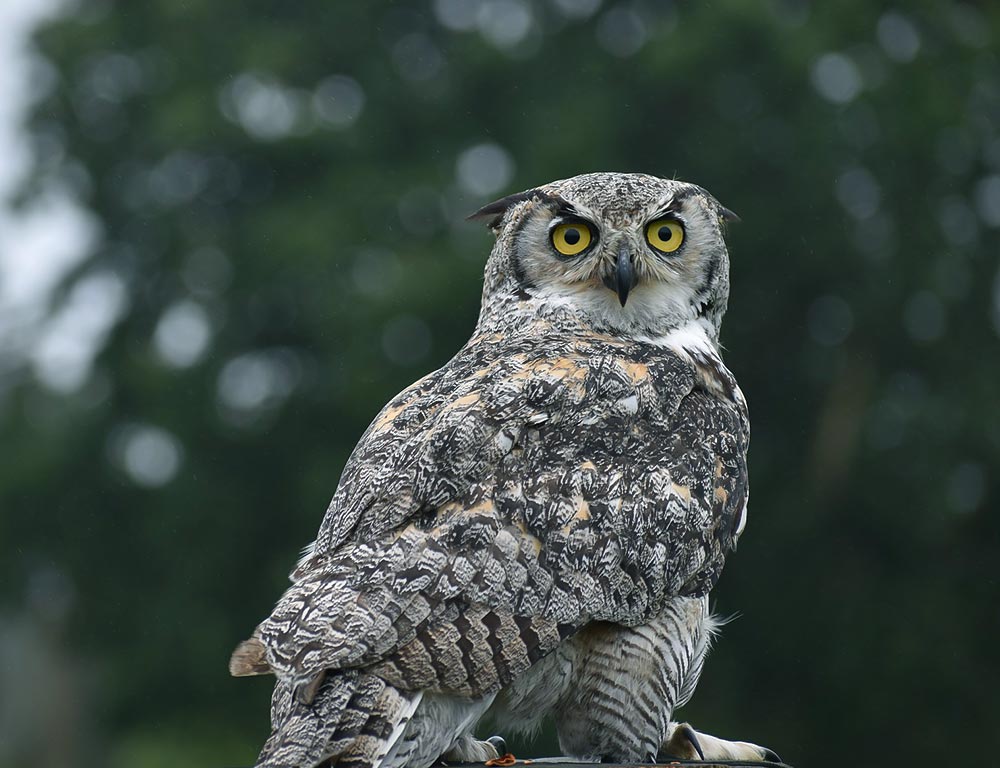
- Scientific name: Bubo virginianus
- Population: Common
- Life span: 5 to 15 years
- Size: 18 to 25 inches
- Weight: 2 to 5.5 pounds
- Food: Rodents, birds, mammals, and sometimes other owls
- Wingspan: 3.3 to 4.8 feet
- Status: Least Concern
The Great Horned Owl is a formidable predator found in various habitats throughout Tennessee. Its distinct ear tufts and large, yellow eyes indicate its striking appearance.
These owls are known for their adaptability, residing in diverse environments, from forests to urban areas. Their diet includes a wide range of prey, making them successful hunters.
With powerful talons and keen senses, they are nocturnal hunters capable of taking down prey larger than themselves. Great Horned Owls typically establish nests in trees, reusing the nests of other birds.
2. Barred Owl
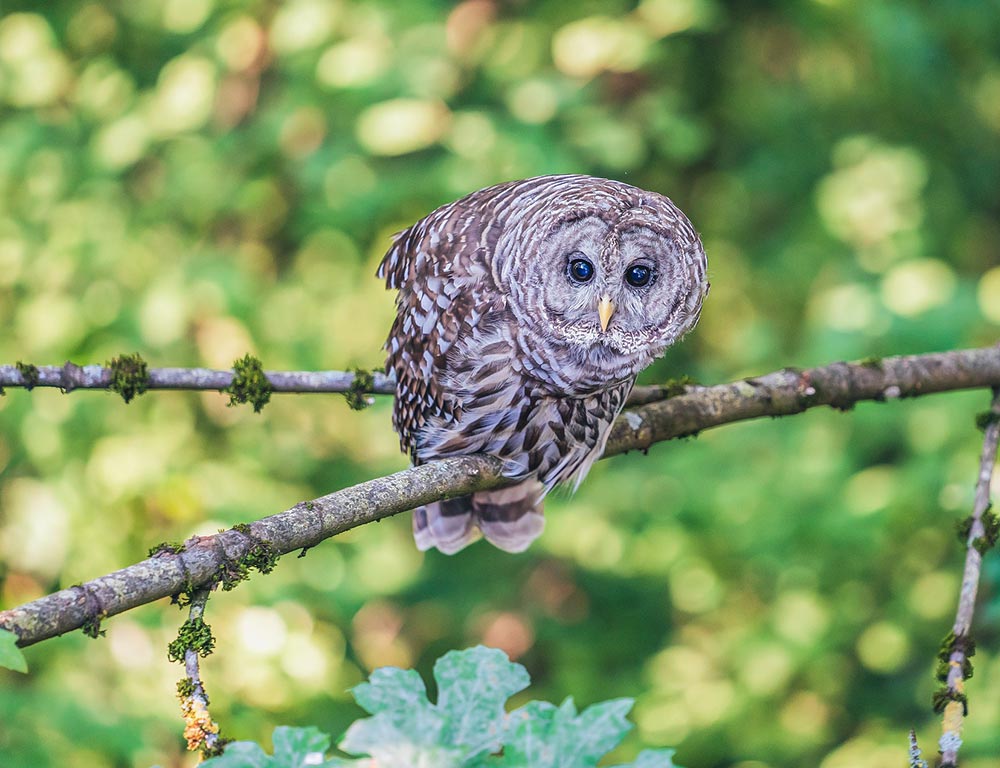
- Scientific name: Strix varia
- Population: Stable
- Life span: 10 to 23 years
- Size: 16 to 25 inches
- Weight: 1 to 2.5 pounds
- Food: Small mammals, birds, amphibians, and invertebrates
- Wingspan: 3.3 to 3.7 feet
- Status: Least Concern
The Barred Owl is recognized by its distinctive “who-cooks-for-you” call. These owls inhabit wooded areas and are often found near water sources.
They have a mottled brown and white plumage, providing excellent camouflage in their forested habitats. Barred Owls are skilled hunters, swooping down to catch prey with silent flight.
They are territorial birds, and their habitat includes a mix of dense woods and open spaces. Despite their preference for wooded areas, they can adapt to suburban environments.
3. Barn Owl
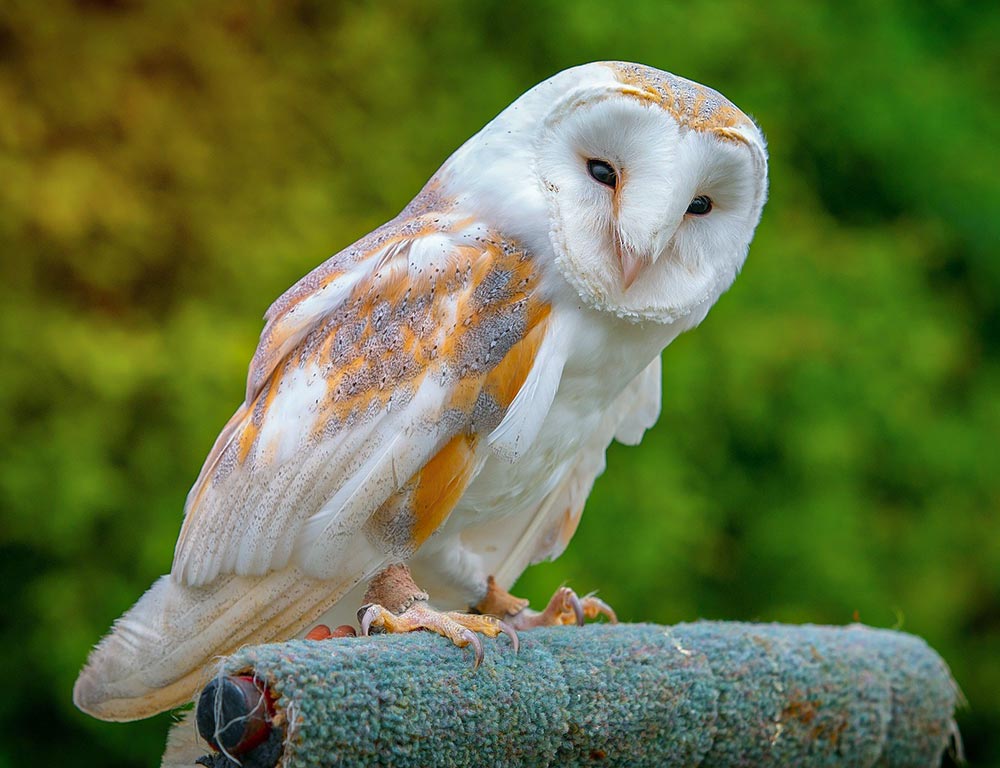
- Scientific name: Tyto alba
- Population: Declining
- Life span: 2 to 15 years
- Size: 12 to 16 inches
- Weight: 1 to 1.5 pounds
- Food: Small mammals, especially rodents
- Wingspan: 3.3 to 3.7 feet
- Status: Endangered
The Barn Owl is easily distinguished by its heart-shaped facial disc and pale plumage. These owls are found in various open habitats, including farmland and grasslands.
With a keen sense of hearing, Barn Owls locate prey primarily through sound. Their silent flight allows them to approach prey stealthily.
Unfortunately, Barn Owl populations in Tennessee are declining due to habitat loss and pesticide use impacting their food sources.
Conservation efforts are crucial to protect these elegant hunters and maintain the ecological balance in their habitats.
4. Eastern Screech Owl
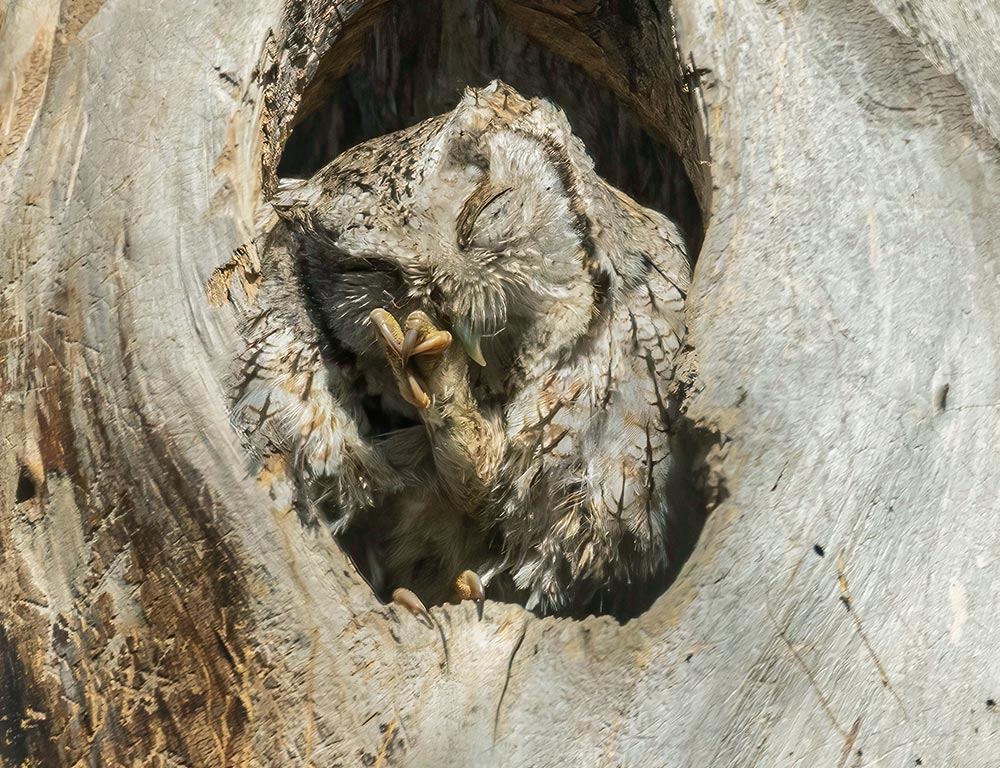
- Scientific name: Megascops asio
- Population: Common
- Life span: 5 to 10 years
- Size: 6 to 10 inches
- Weight: 4 to 8 ounces
- Food: Insects, small mammals, birds
- Wingspan: 1.5 to 2 feet
- Status: Least Concern
The Eastern Screech Owl, with its small size and distinctive ear tufts, is a common resident of Tennessee woodlands, parks, and suburban areas.
They come in two color morphs, red and gray, providing excellent camouflage against tree bark. Nocturnal hunters, these owls have excellent night vision and keen hearing, making them efficient predators.
They nest in tree cavities or artificial nest boxes, and their haunting trill can be heard during the breeding season. Despite their small stature, Eastern Screech Owls are skilled hunters, preying on insects, small mammals, and birds.
5. Short-eared Owl
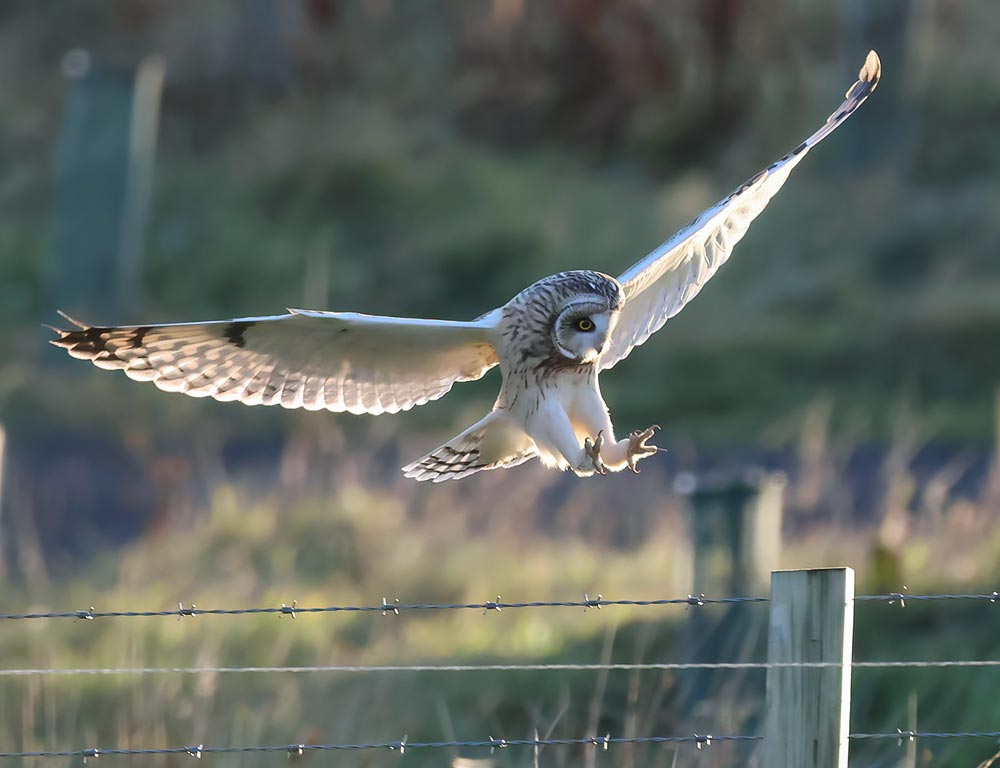
- Scientific name: Asio flammeus
- Population: Declining
- Life span: 3 to 5 years
- Size: 13 to 17 inches
- Weight: 7 to 17 ounces
- Food: Small mammals, birds, and insects
- Wingspan: 2.9 to 3.5 feet
- Status: Special Concern
The Short-eared Owl is known for its distinctive facial disk and habit of hunting during daylight hours, a behavior uncommon among owls.
Found in grasslands, marshes, and open areas, they have a widespread distribution. Their name comes from the short tufts of feathers on their ears.
Short-eared Owls often nest on the ground, utilizing nests made by other birds or creating simple scrapes in the vegetation. Unfortunately, their populations are declining due to habitat loss and disturbance.
6. Northern Saw-whet Owl
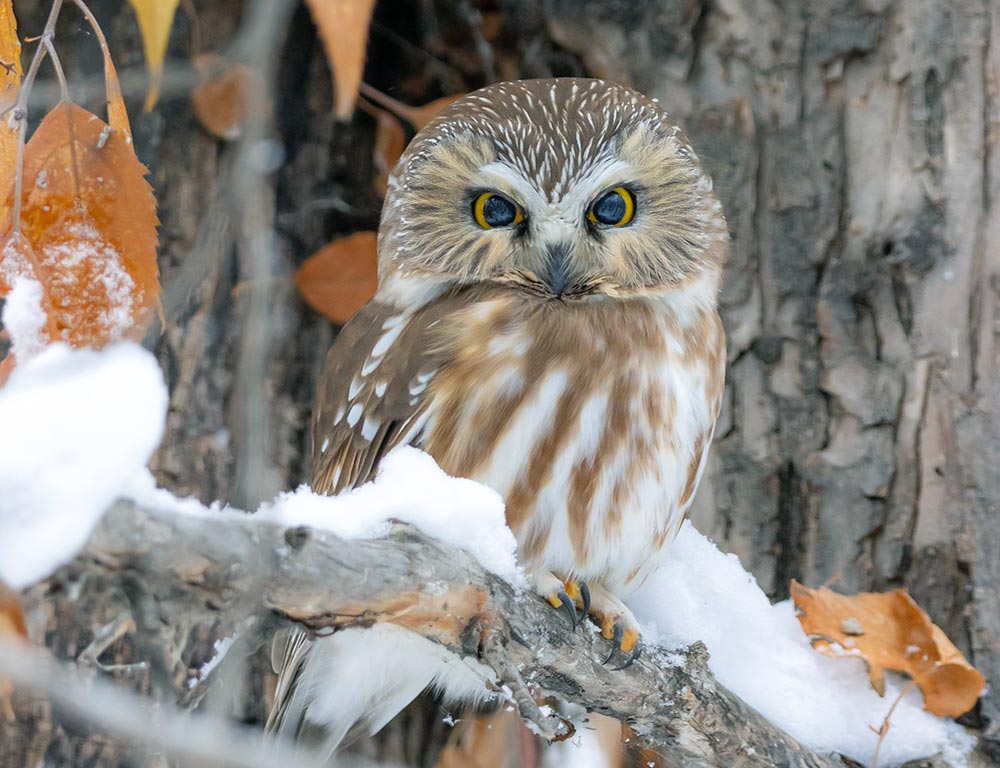
- Scientific name: Aegolius acadicus
- Population: Stable
- Life span: 3 to 5 years
- Size: 7 to 8 inches
- Weight: 2.5 to 5 ounces
- Food: Small mammals, birds, and insects
- Wingspan: 16 to 18 inches
- Status: Least Concern
The Northern Saw-whet Owl is a secretive forest dweller with its small size and distinctive facial pattern.
Despite its small stature, it is a fierce hunter, preying on small mammals, birds, and insects. These owls are named after the “whetting” sound their calls resemble.
They nest in tree cavities and are known for their elusive nature. The Northern Saw-whet Owl’s populations remain stable, benefiting from conservation efforts to protect their forest habitats.
7. Long-eared Owl
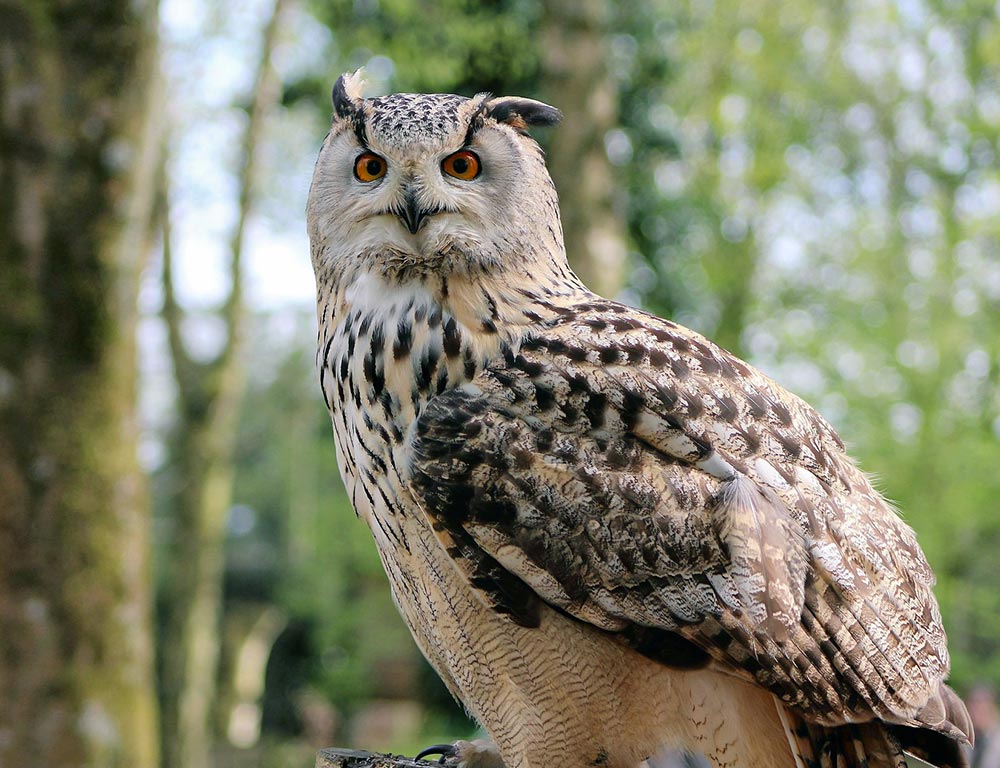
- Scientific name: Asio otus
- Population: Declining
- Life span: 4 to 10 years
- Size: 13 to 16 inches
- Weight: 7 to 16 ounces
- Food: Small mammals, birds
- Wingspan: 35 to 39 inches
- Status: Least Concern
The Long-eared Owl is characterized by its long ear tufts and orange facial disc. These owls are typically found in woodlands and coniferous forests, where they roost in dense vegetation.
Long-eared Owls are primarily nocturnal hunters, preying on small mammals and birds. They are known for their cryptic plumage, providing excellent camouflage in their woodland habitats.
Unfortunately, their populations are declining due to habitat loss, disturbance, and changes in land use. Conservation efforts are essential to protect their habitats and ensure the survival of these elusive owls.
8. Snowy Owl

- Scientific name: Bubo scandiacus
- Population: Varies (irruptive species)
- Life span: 9 to 10 years
- Size: 20 to 28 inches
- Weight: 3 to 6.6 pounds
- Food: Lemmings and other small mammals, birds
- Wingspan: 49 to 59 inches
- Status: Least Concern
The Snowy Owl, known for its striking white plumage, is an iconic species often associated with the Arctic.
In winter, they can migrate southward, and occasional sightings occur in Tennessee during irruption years. Snowy Owls have large, powerful bodies and distinctive yellow eyes.
They are diurnal hunters, relying on their keen vision to spot prey, primarily lemmings in their Arctic habitats. Snowy Owls are adapted to cold climates, and their thick plumage provides insulation against extreme temperatures.
Conservation efforts focus on protecting their breeding grounds in the Arctic and minimizing disturbances during winter migrations to ensure the well-being of these magnificent birds.
Wrapping Up
The Owls of Tennessee exhibit a rich tapestry of biodiversity, with each species playing a unique role in the state’s ecosystems.
From the iconic snowy expanses of the Snowy Owl to the stealthy nocturnal hunters like the Great Horned and Barred Owls, these birds contribute to the delicate balance of nature.
Sadly, some face threats, underscoring the importance of conservation efforts. The decline of certain species emphasizes the need for continued awareness and action to protect their habitats and preserve these captivating creatures for future generations.
As guardians of the night and symbols of wisdom, Tennessee’s owls remind us of the interconnectedness of all living beings, urging us to cherish and safeguard the natural world. Thank you so much.